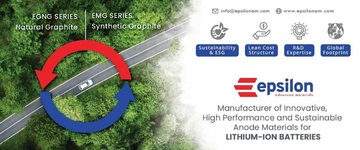Ramping up manufacturing & innovations in the battery decade
Once-in-a-century technology revolution like auto electrification, advancement in technology combined with a thrust towards clean energy, governments' push towards localization, and reducing imports are factors driving breakthroughs in energy storage space.
The manufacturing sector has a huge role to play in the development and growth of any country. Naturally, both developed and developing countries consider the manufacturing sector as the steering force of the economy.
Supportive incentive schemes by the government that encourage technology transfer, setting up of new manufacturing facilities, and improving ease-of-doing-business go a long way in the initial phase of development of the manufacturing sector. Similarly, investments in innovations and R&D also play a critical role.
Manufacturing is not only important for laying strong economic foundations but also from a national security perspective. The supply chain disruptions witnessed post-COVID-19, and international trade tensions have led to a renewed push to develop manufacturing, especially in the energy and e-mobility sector.
Several countries are now starting to think of energy security as a key factor and have started promoting regional manufacturing hubs for batteries. Of the global regions, the most prominent expansion is underway in Europe -- where more than 600GWh of advanced cell chemistry storage manufacturing is expected to come up in the next five years.
Followed by the U.S., where 300GWh manufacturing is expected to come up. In India, the Union Cabinet has approved the Advanced Chemistry Cell (ACC) program for 50 GWh battery storage manufacturing. In October, an RFP inviting bids on the ACC program was also released.
Experts note these developments are democratizing the entire supply chain and creating opportunities for new manufacturing hubs, diversifying suppliers of components or other materials for the renewable energy and e-mobility sector.
At the 5th World Energy Storage Day, industry veterans, policymakers, and researchers discussed the optimistic market for energy storage, the latest manufacturing and innovation megatrends, and the opportunities & barriers across the four global regions:
R1: Australia & New Zealand, Singapore, Philippines, Indonesia, Japan, China, South Korea
R2: India, SAARC, Russia
R3: Europe, UK, Middle East & Africa
R4: United States, Latin America, and Canada
The panelists at WESD 2021 noted that there is a need for more energy-efficient products with changing behavior and expectations of consumers, and therefore, an urgent need for promoting manufacturing and innovation in the energy sector.
Once-in-a-century technology revolution like auto electrification, advancement in robotization and Artificial Intelligence combined with a thrust towards clean energy, governments' push towards localization, and reducing imports in key areas in the auto and energy sector are all the factors driving innovation in the clean energy and e-mobility sector.
In Region 1, Sanjiva De Silva, Counsellor (Industry, Science, Energy & Resources) - Australian High Commission India, said: "Both the Australian and Indian governments are encouraging private sector investments in mining and allied industries, whose partnership stems from some commonalities and vision of addressing environmental and climate change challenges."
Speaking of the significance of Western Australia as a region to secure key minerals for manufacturing of rechargeable batteries, Chris Bandy, Investment and Trade Commissioner (South Asia) - Government of Western Australia, mentioned that their government priority is to improve participation in global supply chains, promote investment opportunities, certify battery minerals, support energy storage applications, and develop local capabilities.
In Region 2, the panelists discussed the growing appetite for Li-ion batteries in India.
"We [Nexcharge] believe that India as a country has immense potential to grow to a pioneer in energy storage and set an example for others. The Li-Ion market in India would see a significant shift and reach - 80 GWh by 2030, and in an optimistic scenario, we could witness the market reaching 160 GWh," said Stefan Louis, CEO - Nexcharge. About 80 percent of the new demand is expected to come from battery electric vehicles (BEVs).
The panelists acknowledged that India as a country has a unique set of challenges and certain models successful elsewhere cannot be merely replicated here.
"Our grid challenges are different, our energy supply is different, our micro-logistic needs are different. For example, we are not looking at long-haul travel. A large part of our problem is micro-logistics, typical urban commute patterns, drive schedules shaped by our road conditions, traffic jams, user needs," expressed Vijayanand Samudrala, President - New Energy at Amara Raja Batteries.
While India has the potential to become a global manufacturing hub for ACC batteries, experts on the panel called for coordinated action between the government and the private sector to help create globally competitive manufacturing companies, and the need for shifting focus from cost advantage to building capabilities through workforce skilling, innovation, quality products, and sustainability.
Other suggestions included focusing on infrastructure development, reducing cost compliance, and establishing manufacturing capabilities faster. Additionally, experts also suggested accelerating integration in global value chains by reducing trade barriers and enabling competitive global market access for Indian manufacturers.
In the past few years, it was noted that there has been considerable R&D in electricity storage. Data suggests that patenting activities between 2005-18 grew on an average annual rate of 14 percent worldwide [study by EPO and the IEA]. In addition to these efforts, several private companies and research labs are continuously working on R&D on battery improvements and innovations in-house.
"To keep up with the increased energy demands we need to focus on research to create a cost-effective and efficient way to generate and store energy," said Stefan Louis, CEO - Nexcharge.
In Region 3, the panelists underscored the significance of developing the manufacturing sector in key areas and building on the natural competitiveness of the region.
Making battery cost-competitive was an area that needs more innovations, the speakers highlighted. Substituting the most expensive raw materials with less expensive ones, and significantly reducing cost while maintaining performance would be very critical in the near term.
Shifting the focus on Africa, the speakers noted that for developing economies such as South Africa, manufacturing offers an important pathway to achieve economic development and also creates jobs for the economy.
"One-way developing countries can look at local manufacturing is to ask, is there something that makes the country unique? That creates natural competitiveness. Something that can only be manufactured there rather than in other countries," said Mikhail Nikomarov, Chairman - SAESA South African Energy Storage Association, and Co-founder - Bushveld Energy.
Speaking of the manufacturing scenario in Africa, Naicker urged that there is a need for transforming Africa from an extractive economy to a manufacturing one. He noted Africa has what the world needs, i.e. abundant battery minerals to meet the growing demand.
"Localizing the lithium-ion battery value-chain offers an unprecedented opportunity for sub-Saharan Africa to establish itself as the global EV manufacturing powerhouse," Naicker said. "It offers a big opportunity to start mega industries – from mining minerals, beneficiation to making battery-grade powder and more."
Frederic Verdol, Senior Power Engineer at World Bank, expressed that while current developments in the region look promising, there is a need for visibility and planning for a market to be created.
"It is very good that South Africa was the first country in Africa to have targets on battery storage [2000MW on the grid by 2030], but it is not enough," Verdol cautioned.
In Region 4, the panelists discussed the need for advances in manufacturing and innovation in energy storage to meet the decarbonization goals of the region.
"We aim to decarbonize electricity, transportation, energy-intensive industries, agriculture, and storage is important to this goal," said Diana Bauer, Advanced Manufacturing Office Deputy Director - US DOE.
Electricity generation (27 percent) and transportation (28 percent) are among the two largest contributors to greenhouse gas emissions in the United States.
Ms. Bauer further discussed the Energy Storage Grand Challenge (ESGC) roadmap and the goal of the United States to develop and manufacture energy storage technologies that can meet all the marketplace demands by 2030.
While the panelists discussed that energy storage will play a key role in transforming the economy, they recognized that some barriers will need to be addressed.
"For transportation, we must decrease the cost, enable fast charging, and make batteries safer. In addition to the cost, we must make batteries with a lifecycle of 20-30 years, and this is a big challenge," said Venkat Srinivasan, Director – ACCESS, Argonne National Laboratory.
"Parallel to this, there is a big concern for the supply chain. The countries must start thinking of ways to optimize their supply chains to meet the growing demands.," he added.
Speaking of the strides in research and innovations in new forms of battery, the panelists also touched upon LFP (lithium iron phosphate battery) – popular and promising battery chemistry due to its low-cost and good performance.
"At Quantumscape, we are developing Li-Metal LFP and Li-Metal NMC, which can be appropriate for different technologies," Tim Holme, Co-founder & TCO – Quantumscape, said.



























